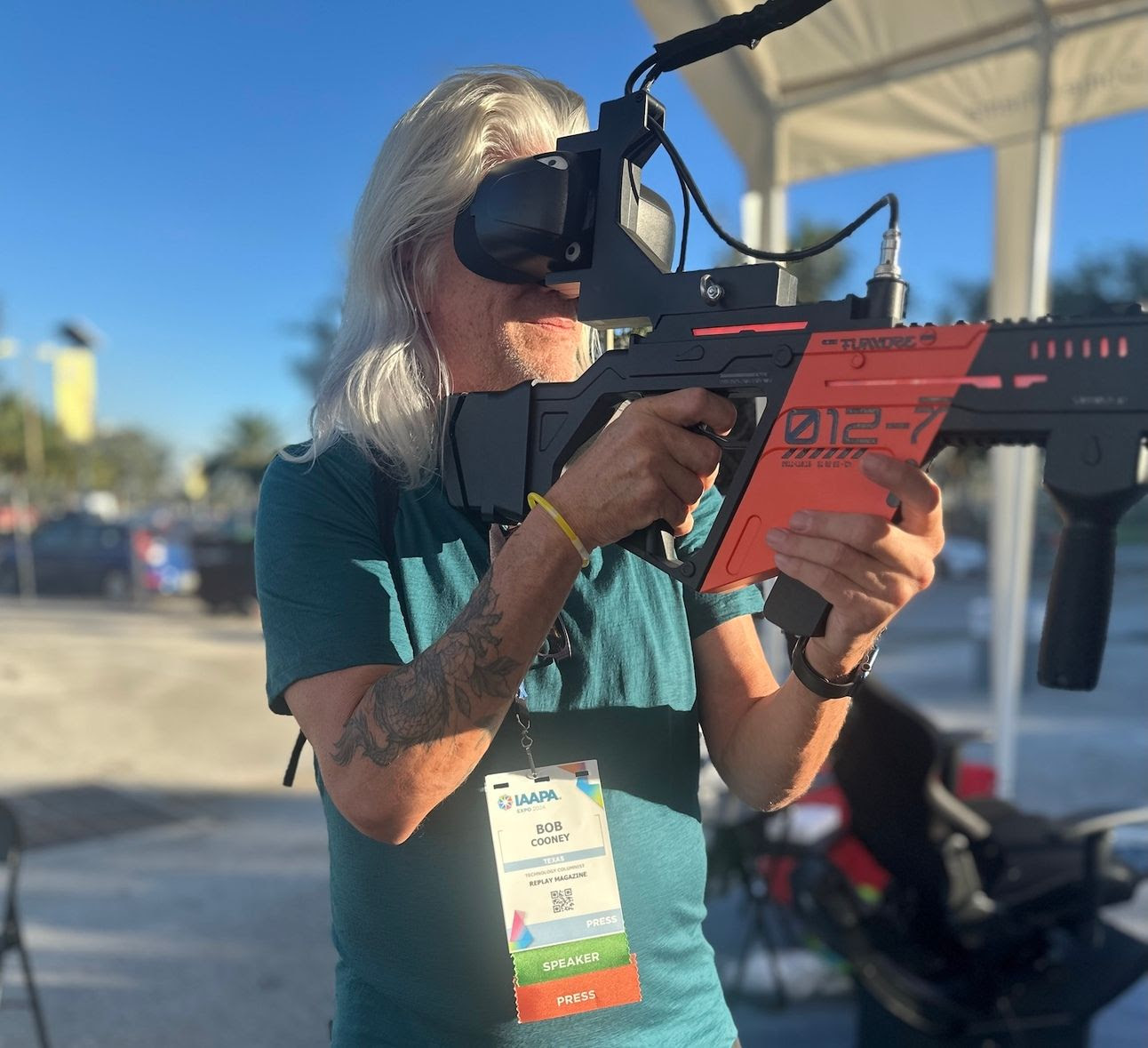
There was a reasonable amount of VR, but the number of VR experiences on exhibit is way down from 2018 when there were over 100 VR products. Most of the stuff on display this year was there last year. And the year before. This is good; it shows the longevity of the best products. Free-roam companies are showing new games to enhance their libraries. The coaster companies are working on additional content and increased reliability. But as far as real innovation this year, it was incremental at best.
The lack of innovation suggests that suppliers are working on the little things that make solutions better for players and operators. New launcher features, software stability, peripheral integration, and other things that might not make headlines but do remove headaches for operators.
Almost every VR attraction now has some kind of haptic effect. Force feedback rifles from Striker VR were being featured on the free-roam platforms. Wind, heat, and vibrating floors are available in more solutions. I even did a new motion platform from YAW VR that spun me around until I swore I was on a real coaster.
Bay Tek finally relaunched HyperDeck and Spongebob Dynamic Duo after it acquired developer Major Mega in February. They’re sticking with the OG HTC Vive headsets and lighthouse tracking (for now.) They’ve hired a team of three to handle sales of their VR line, so they must expect big things. Having another long-time amusement factory in VR games and LAI, Raw Thrills, SEGA, Unis, TrioTech, and Andamiro is good. Any predictions on who’s next?
After Raw Thrills chose DPVR out of China for their Godzilla headset, the company aggressively courted other factories to switch from HTC and Pico. LAI Games unveiled a conversation kit for Virtual Rabbids featuring a highly ruggedized DPVR headset. Its new Asphalt 9 Legends VR racer also sports the DPVR goggles. It would be good to see the factories align around a single headset to make operators’ lives easier.
Megaverse, the turnkey hyper-reality free roam-in-a-box attraction rolling into Great Wolf Lodges this year, gave me a demo back-to-back demos of the old HTC Focus 3 and the new Focus Vision. The new full-color, stereo passthrough mixed reality made onboarding much more comfortable. I can’t wait to see how developers integrate MR into their experiences. It also features auto-IPD adjustment. When you put on the headset, the onboard eye tracking measures the distance between your eyes and adjusts the lenses for maximum clarity and comfort. Awesome!
I get asked about AR a lot. People love seeing the natural world and having digital interactive objects placed into their field of view. At IAAPA, Verse Immersive showed a demo of an AR free-roam attraction. It used Microsoft’s Hololens 2 headset, which was recently discontinued, so they’ll need to find a new hardware solution. But for people who don’t like the idea of being fully immersed in a virtual world, AR offers a less intense experience. That could lead to more accessible experiences that appeal to wider audiences. Main Event has been testing it and reportedly likes offering long-form immersive experiences that aren’t focused on gaming. Watch this space.
Three portable free-roam systems were on display from Hero Zone, VR Esports Arena, and Laser Limbo (in the outdoor exhibits.) Prices vary, as all three featured different headsets for their portable systems. Laser Limbo was running on Quest, Hero Zone showed their travel cases stuffed with Pico Neo 3, and VR Esports Arena showcased the VIVE Focus 3. With portable walls, a backdrop, flooring, and six headsets and controllers, the latter system was under $25K and reportedly fits in a panel van.
I finally got the chance to check out the launcher system from Spawnpoint. Ben Woodford, who was instrumental in creating the first Springboard VR platform, has been hard at work creating a flexible system that’s easy for operators to use. He’s integrated both PCVR and Standalone content with multi-arena support, so from a single PC, an operator could manage two, three, or even four free-roam spaces. This makes running a high-capacity free-roam space in an FEC for as many as 24 players or more feasible. Operators could start with a single 6-player arena, then add more spaces with different games as they get more confident.
I’ll cover these things and others in more detail in the coming weeks and months. In the meantime, if you have any questions, register for my free Ask My Anything coming up on Dec 3, 2024 at 10 AM Pacific, 1 PM Eastern, and 6 PM UK time.


